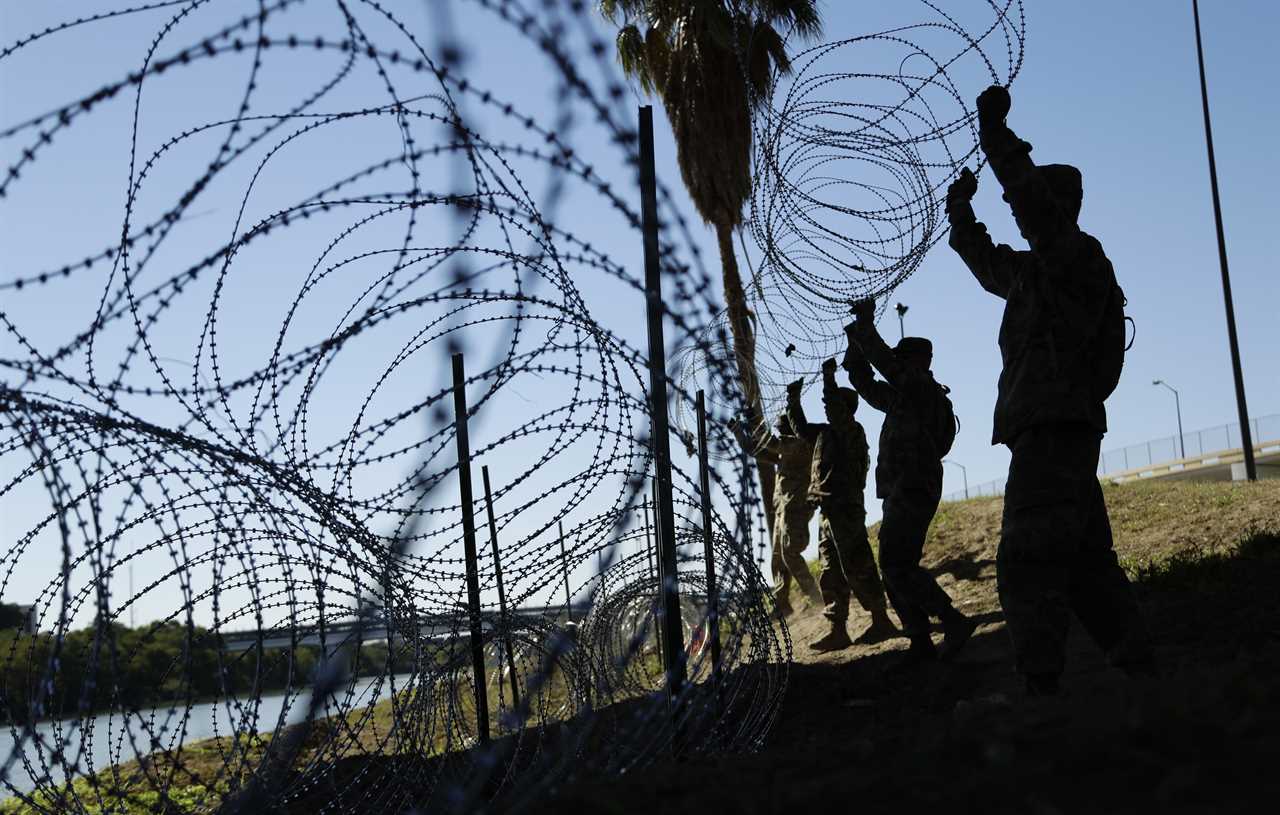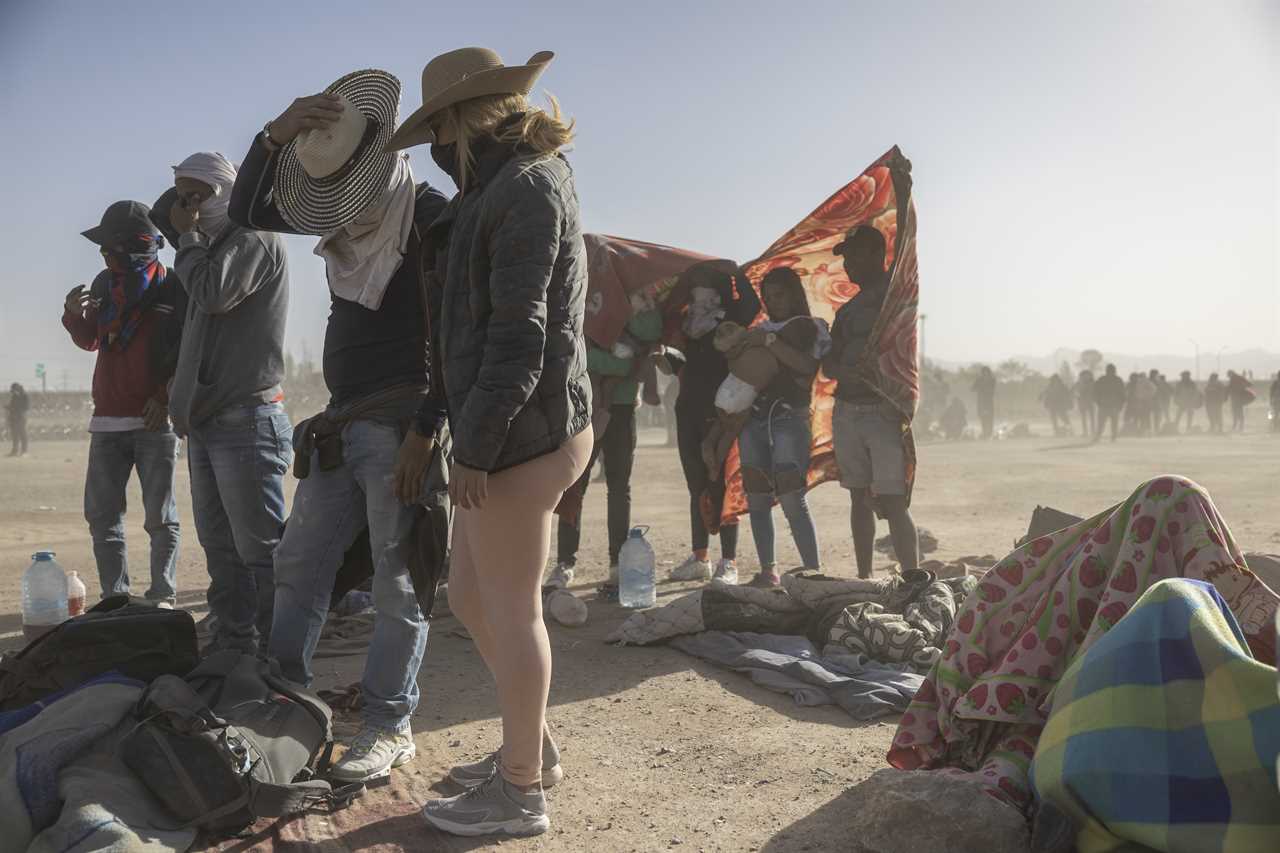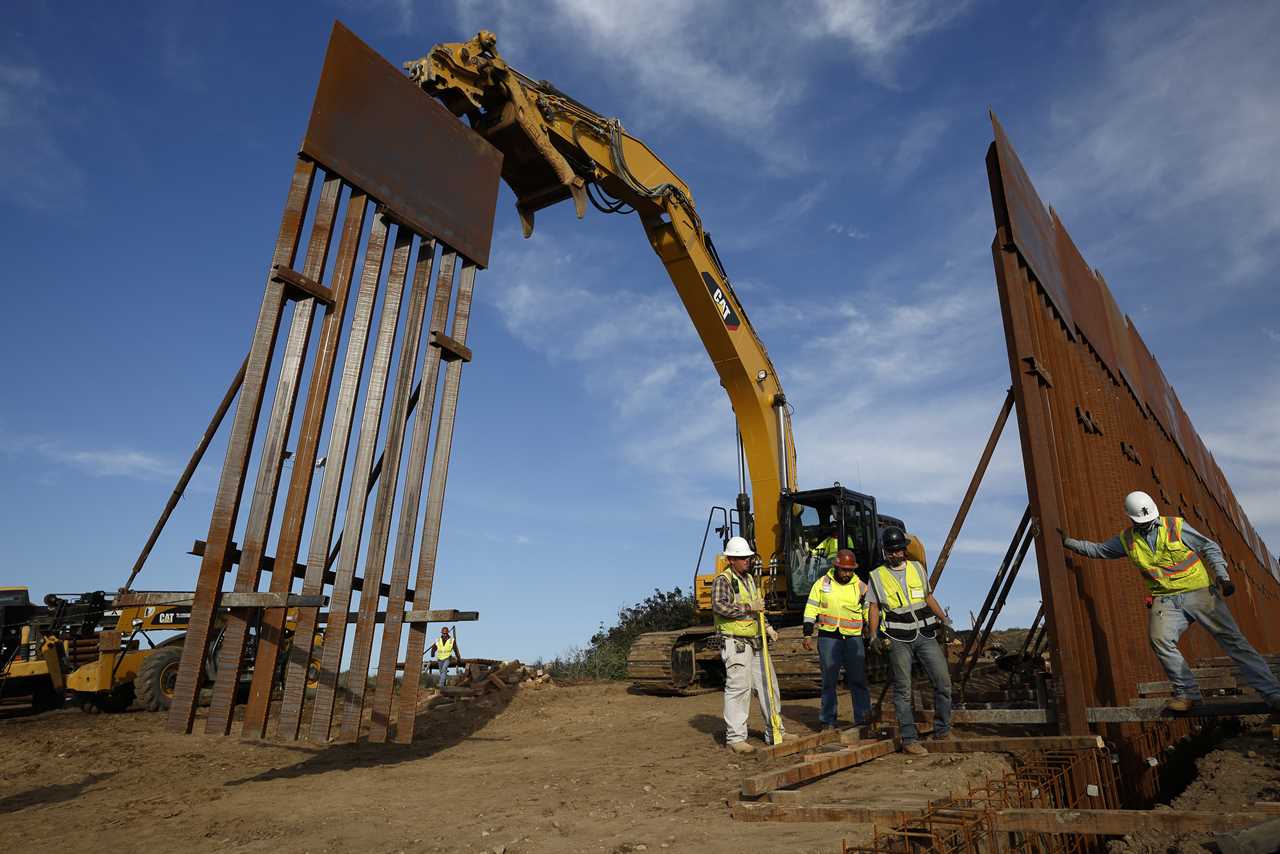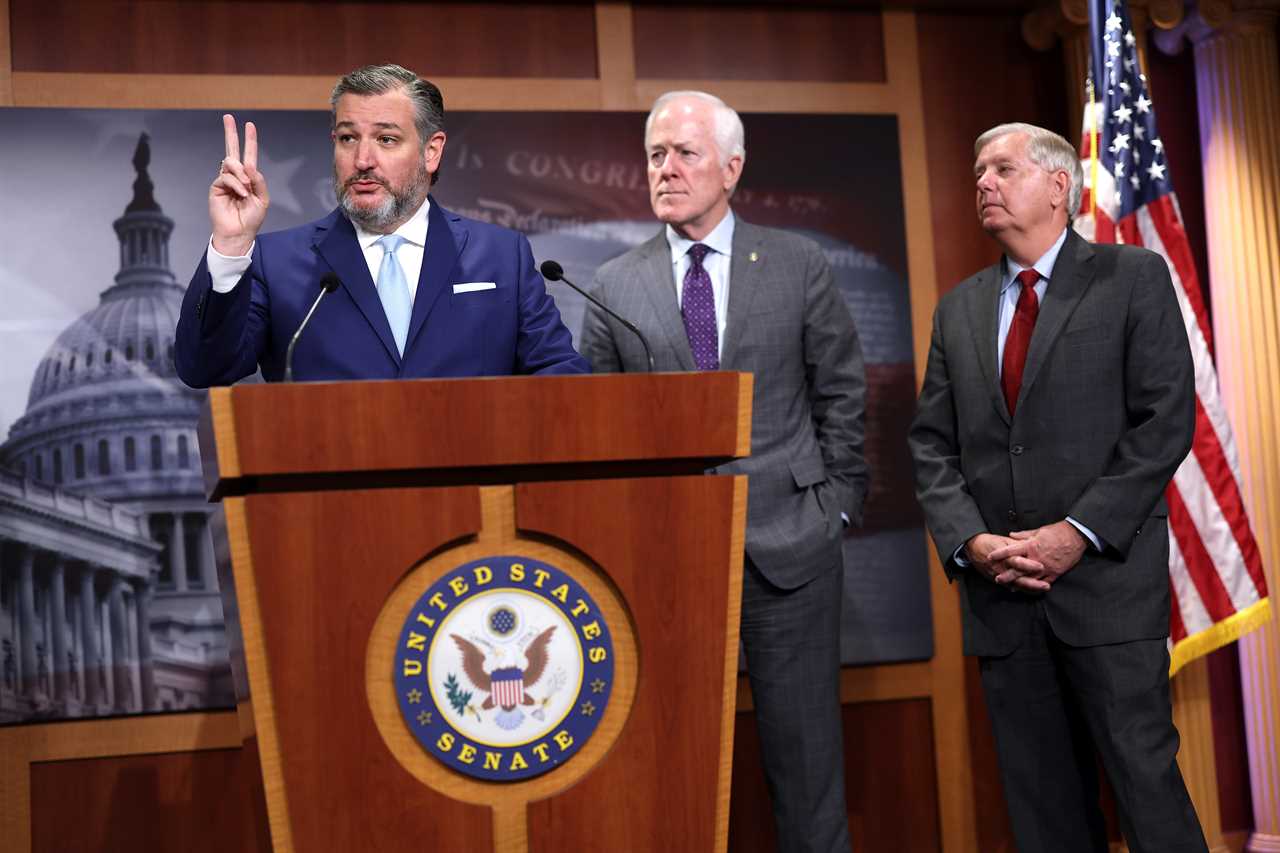
Hundreds of active-duty U.S. troops are descending on the Mexican border this week, but they’re not authorized to make arrests, use their weapons or do much more than administrative work.
That’s making the military deployment — timed for the end of pandemic-era immigration restrictions — a classic no-win political situation for the Biden administration, which is getting hit from at least one prominent Democrat for perpetuating Trump-era militarization of the border, and from Republicans who say the mission will be utterly ineffectual.
Within President Joe Biden’s party, Sen. Bob Menendez has been blasting Biden’s move as “trying to score political points or intimidate migrants by sending the military” and catering to the GOP’s “xenophobic attacks on our asylum system.”
Most Democratic congressional leaders have been muted in their reaction to the deployment, even though they were quick to criticize border deployments when Trump did it.
Indeed, despite Biden’s shift in tone on immigration from former President Donald Trump, he’s kept some troops on the border since taking office in 2021. The 1,500 troops who began arriving this week are joining 2,500 National Guardsmen who have been there since last year.
But there are key differences between this year’s deployment and Trump’s, from what the troops are allowed to do to the situation on the ground to the way Congress is approaching the question.
Trump allowed active-duty troops to temporarily detain and search migrants. Soldiers laid hundreds of miles of concertina wire and erected temporary barriers while Trump funneled billions of dollars meant for military construction projects toward the wall.
The troops headed to the border this week, on the other hand, will be armed only for self-defense and will carry out backroom tasks.
What will that add up to? Not much, say Republicans. “I just think he should have secured the border months ago, and it’s window dressing in my view,” said Senate Armed Services Committee member Dan Sullivan (R-Alaska).
Here’s what you should know:
The situation on the ground

The former president’s use of the military at the border was part of a broader anti-immigration push, which also included racially-charged travel bans, deportations and separating families. Trump sent thousands of active-duty and National Guard troops to the border through a series of deployments over the course of the spring and fall of 2018 to help repel a much-discussed caravan of immigrants from Central America.
At the time, the numbers did not point to a crisis: In 2017, the number of undocumented immigrants caught at the border was the lowest since 1971, according to U.S. Border Patrol. And the caravan itself, which Trump suggested might include Middle Eastern terrorists, was part of what had become the normal annual seasonal uptick in Central American migrants making their way to the border.
Many observers at the time saw the deployments as politically motivated, designed to fire up the Republican base ahead of the midterm congressional elections.
Now, Biden is responding to the expected end of Title 42, which has allowed the U.S. to deny asylum and migration claims for public health reasons. Officials say the expiration of Title 42 on Thursday will prompt an influx of Central Americans into the U.S.
Menendez (D-N.J.) and some Republicans questioned whether Biden made the decision as a way to show Republicans that he’s getting tough on immigration. Republicans, on the other hand, have called on the president to implement a Title 42 equivalent to replace it.
Officials say they would have preferred to rely on law enforcement agents for the mission, but the Department of Homeland Security is short on people and money. So the administration is turning to what they have now, which is 1,500 active-duty troops. And officials say they will be there for only 90 days, until law enforcement can find contractors to do the work.
What the troops can — and cannot — do

The 1,500 troops Biden is sending will be armed for self-defense only and are not authorized to use force, make arrests or otherwise act in a law enforcement role. This is in keeping with the Posse Comitatus Act, which prevents the active-duty military from enforcing the law inside the United States.
“Military personnel will not be permitted to support migrant processing and escort duties or other activities that involve direct participation in civilian law enforcement activities, be responsible for property seized from migrants, or require direct contact with migrants,” according to a statement from U.S. Northern Command.
Instead, they will be performing administrative tasks such as data entry, warehousing, and additional detection and monitoring support to free up Border Patrol agents to deal with the migrants.
They are joining 2,500 National Guard troops on active-duty status — also subject to Posse Comitatus — already doing similar work at the border since July 2022.
By contrast, Trump granted active-duty troops the authority to protect law enforcement agents if they engaged in violence in November 2018, a controversial move that put the military in direct contact with migrants.
The decision, which then-Defense Secretary Jim Mattis initially resisted, allowed troops to conduct “crowd control, temporary detention and cursory search,” as well as use “a show or use of force (including lethal force, where necessary)” in order to protect the agents.
At the time, insiders and outsiders questioned whether active-duty troops detaining and searching people on U.S. soil constituted law enforcement. But Mattis told reporters that it technically did not violate Posse Comitatus because any such action was temporary.
“I would put it in terms of minutes. In other words, if someone’s beating on a border patrolman and if we were in a position to have to do something about it we could stop them from beating on them and take them over and deliver them to a border patrolman who would then arrest them for it,” he said.
Additionally, National Guard members on state orders who deployed to the border under Trump were authorized to perform law enforcement duties, according to a former senior Defense Department official directly involved in the discussions. Since Posse Comitatus does not apply to those troops, they were able to accompany agents during arrests, searches, and other law enforcement missions.
That loophole is one of the reasons those units were sent to the border at the time, the former official said.
U.S. officials say that the Department of Homeland Security lacks the resources to deal with the expected influx of people seeking asylum, so the troops are filling a gap and freeing up Border Patrol agents to work the border.
Construction

Part of the reason Trump sent troops to the border in 2018 was to help build his long-promised wall along the Mexican border. The Pentagon was directed to send members of the Army Corps of Engineers to help lay miles of concertina wire and erect other barriers and fencing.
By fall 2018, the Pentagon estimated that there would be more than 7,000 troops supporting DHS across California, Arizona and Texas, and released hundreds of photos of troops laying concertina wire for the border barrier.
Trump also shifted billions meant for military infrastructure projects to finance the border wall. The move drew bipartisan opposition, but Congress wasn’t able to muster the support to stop Trump.
Biden canceled the project when he took office, but kept the National Guard presence on the border for other support missions.
Congressional reaction

While Democrats widely and loudly condemned Trump’s use of troops at the border and Republicans cheered it, there’s been something of a reversal this time around.
Menendez has been the most visible critic of both presidents, calling Biden’s recent moves “unacceptable,” and a “militarization of the border.”
“I believe that any element of militarizing the border is both fundamentally wrong and morally wrong as well,” he said. “And it sends a message that in fact, people who are seeking asylum and refuge are somehow a threat to the United States.”
Republican critics say Biden’s moves are meaningless.
At a press conference last week, Sen. Lindsey Graham (R-S.C.) declared the deployment “ridiculous theater,” while Sen. Ted Cruz (R-Texas) said the troops would “accomplish nothing.” On Wednesday, Cruz said the Trump and Biden troop deployments were “qualitatively different.”
“There can be an important role for troops on the border; boots on the ground make an enormous difference,” Cruz said. “But it only matters if you have an administration that is following the law — and that in particular is being willing to deport people who come here illegally.”
Asked why, after opposing Trump’s deployments, Democrats are less vocal about Biden, Sen. Elizabeth Warren (D-Mass.) pointed to Biden’s “four new innovative ways” for immigrants to apply to work in the U.S.
“We are making some changes but not nearly as many as we need to,” she said.
Senate Judiciary Chair Dick Durbin (D-Ill.) said that the end of Title 42 justified the deployment of troops this time around.
“We’re anticipating an uncertain, worrisome situation in the next few days,” Durbin said. “I think the president is trying to make sure he's prepared for many options, so I don't begrudge him that decision.
----------------------------------------
By: Lara Seligman, Joe Gould and Connor O’Brien
Title: Both Biden and Trump sent troops to the border. That’s where the similarities end.
Sourced From: www.politico.com/news/2023/05/12/biden-trump-troops-us-mexico-border-00096439
Published Date: Fri, 12 May 2023 03:30:00 EST
Did you miss our previous article...
https://consumernewsnetwork.com/politics-us/the-woman-who-bilked-reagans-home-town-out-of-54-million






